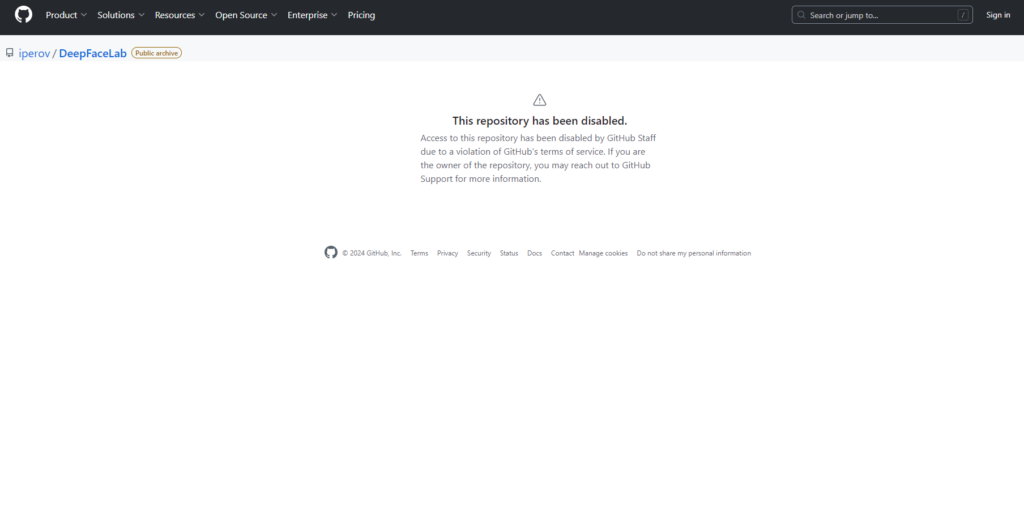DeepFaceLab was a prominent tool used for deepfake creation, allowing users to swap faces in videos using AI and machine learning techniques. However, access to the tool was recently disabled by GitHub Staff due to violations of GitHub’s terms of service. Before its shutdown, DeepFaceLab gained significant attention for its wide range of video-editing capabilities. Despite its controversial use, it was praised for its powerful face-swapping technology.
The platform was favored by video creators, developers, and researchers for its highly customizable AI-based deepfake generation. Its versatility made it an important tool for experimenting with facial recognition, video synthesis, and creative projects.
Due to its breach of policies, the tool is now inaccessible. However, its former users found it to be a highly effective, though ethically debated, resource for exploring the boundaries of video and AI technology.
Features of DeepFaceLab
- Face-Swapping AI: Enables realistic face-swapping in videos using advanced deep learning algorithms.
- Video Synthesis: Allows users to create high-quality synthesized videos by modifying faces.
- Customizable Deepfake Creation: Offers control over parameters for fine-tuning video output.
- Wide Support for Formats: Compatible with multiple video formats, enabling flexible usage.
- GPU Acceleration: Optimized for faster processing using GPU technology.
Pros:
- High-quality face-swapping technology.
- Extensive customization options for deepfake videos.
- Fast processing with GPU support.
Cons:
- Ethical concerns due to potential misuse.
- Requires advanced knowledge for proper use.
- Disabled by GitHub, limiting accessibility.
Who Will Benefit Most from DeepFaceLab
- Video Creators: Individuals looking to experiment with AI-based video manipulation.
- Researchers: Professionals exploring AI applications in facial recognition and video synthesis.
- Tech Enthusiasts: Those interested in the cutting-edge world of AI and deepfake technologies.
